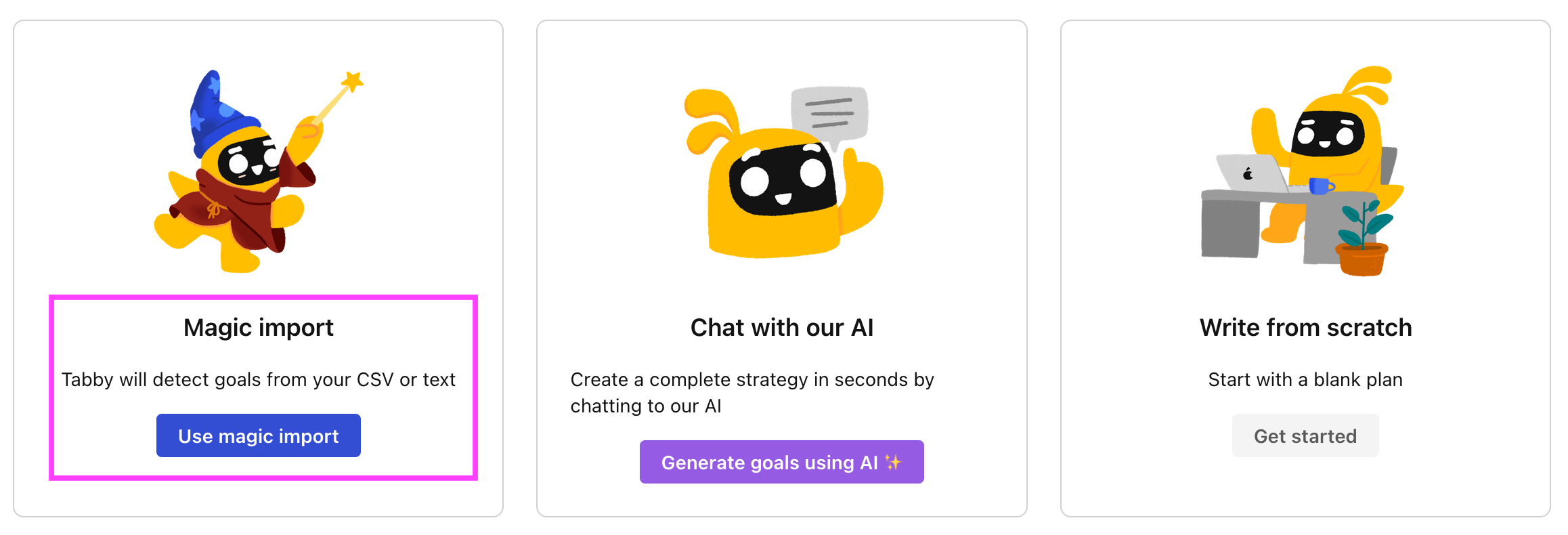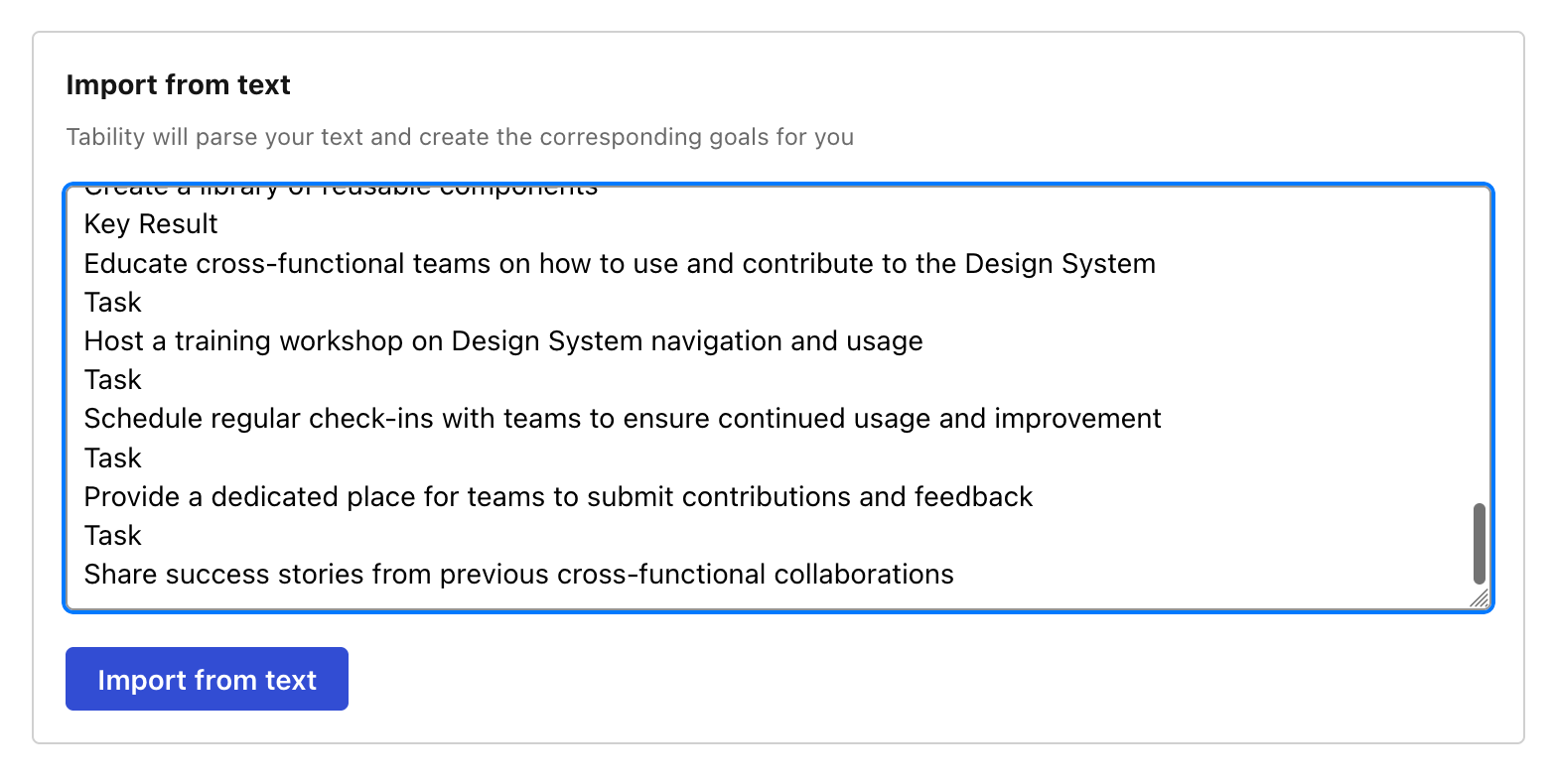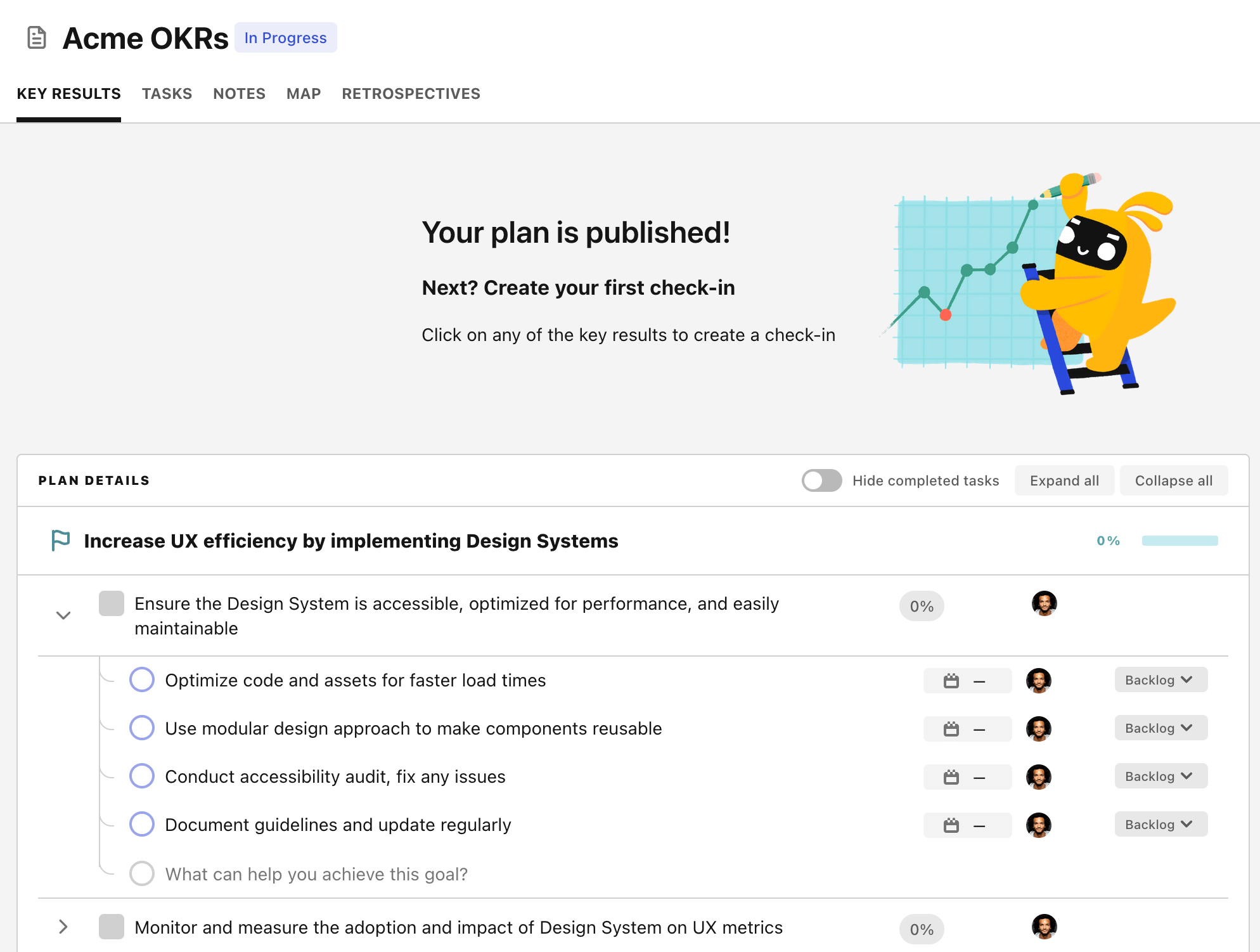OKR template to improve preventive maintenance for crucial infrastructure and equipment
Your OKR template
Proactive care practices might include regular equipment inspections, scheduling routine equipment servicing and training staff on best practices. Achieving this efficiently would require careful identification of critical assets needing proactive care and rigorous research on suitable practices.
The second part of this OKR is directed towards reducing equipment failure or downtime by implementing preventive maintenance measures like regular inspections to detect early signs of faults, routine servicing and staff training on handling and maintaining the equipment effectively. A 15% reduction in equipment downtime is the targeted outcome.
Lastly, an essential part of this OKR involves employee training. The aim here is to provide 90% of the maintenance staff with advanced preventive techniques to further promote equipment longevity and optimal functioning. This goal must be supported through closely monitoring training progress and completion rates, as well as scheduling necessary training.
ObjectiveImprove preventive maintenance for crucial infrastructure and equipment
KRImplement at least 2 new proactive care practices for 70% of critical assets
Research suitable proactive care practices
Identify critical assets needing proactive care
Train staff on new practices implementation
KRReduce equipment downtime by 15% through preventive measures
Implement regular equipment inspections for early problem detection
Establish a schedule for routine equipment servicing
Train staff on proper equipment handling and routine maintenance
KRTrain 90% of maintenance staff in advanced preventive techniques
Monitor progress and completion rates
Identify staff members needing training
Schedule necessary training sessions
How to edit and track OKRs with Tability
You'll probably want to edit the examples in this post, and Tability is the perfect tool for it.
Tability is an AI-powered platform that helps teams set better goals, monitor execution, and get help to achieve their objectives faster.
With Tability you can:
- Use AI to draft a complete set of OKRs in seconds
- Connect your OKRs and team goals to your project
- Automate reporting with integrations and built-in dashboard
Instead of having to copy the content of the OKR examples in a doc or spreadsheet, you can use Tability’s magic importer to start using any of the examples in this page.
The import process can be done in seconds, allowing you to edit OKRs directly in a platform that knows how to manage and track goals.
Step 1. Sign up for a free Tability account
Go tohttps://tability.app/signup and create your account (it's free!)
Step 2. Create a plan
Follow the steps after your onboarding to create your first plan, you should get to a page that looks like the picture below.

Step 3. Use the magic importer
Click on Use magic import to open up the Magic Import modal.
Now, go back to the OKR examples, and click on Copy on the example that you’d like to use.

Paste the content in the text import section. Don’t worry about the formatting, Tability’s AI will be able to parse it!

Now, just click on Import from text and let the magic happen.

Once your example is in the plan editor, you will be able to:
- Edit the objectives, key results, and tasks
- Click on the target 0 → 100% to set better target
- Use the tips and the AI to refine your goals
Step 4. Publish your plan
Once you’re done editing, you can publish your plan to switch to the goal-tracking mode.

From there you will have access to all the features that will help you and your team save hours with OKR reporting.
- 10+ built-in dashboards to visualise progress on your goals
- Weekly reminders, data connectors, and smart notifications
- 9 views to map OKRs to strategic projects
- Strategy map to align teams at scale